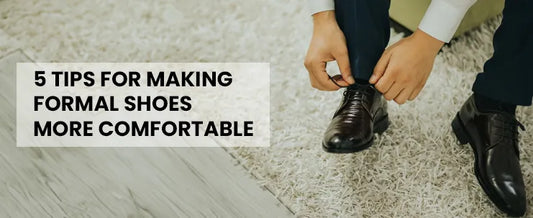More than a fashion accessory, shoes are important in protecting your foot and benefiting the health of the body. A well-fitting pair of shoes provides comfort apart from saving one from foot problems such as bunions, corns, and even stress fractures. A good fit will keep your feet cushioned and your weight evenly distributed while continuing with daily activities without discomfort. From casual shoes to running shoes to formal ones, here are helpful tips that will help you find the best fit for yourself.
1. Measure Your Feet
Your feet change over time. That's why it's crucial that you take your foot measurements and not assume that you still wear the same size of shoes as you did some time back. You should measure both your feet since often one foot might be just a little larger than the other.
2. Take Measurements Late in the Day
Your feet naturally swell throughout the day, so the best time to take a measurement is in the evening when your feet are at their largest. This will ensure that the shoes purchased will feel comfortable during the day after hours of walking or standing.
3. Not To Focus Only On Size
Shoes vary by brand, but even the style within the same brand may fit differently. Use your size as a guide, but you must try on shoes as the best fit may vary with a specific style. For instance, one style of running shoe is different from your ordinary casual sneakers.
4. Match the Shape to Your Foot
The shoe needs to have a silhouette similar to that of your foot. Pay attention to the ball of your foot; it should feel comfortable in the wide part of the shoe. In case if there is part of the shoe which is too tight or too loose then it's not the proper fit.
5. Consider Depth and Width
Individuals with specific conditions of the foot, like hammertoes or wider feet, ensure that the toe box is deep enough in width. If shallow or narrow, friction could lead to the growth of calluses, giving one some kind of discomfort. Give your toes room to wiggle with comfort.
6. Leave Space at the Toes
Try on shoes and stand up; there should be around 3/8" to 1/2" space between the longest toe and the end of the shoe. This will make enough room for the movement of toes inside the shoe without touching the front, especially when working out or performing some other physical activities.
7. Walk Around to Test
Your Shoes Walk around in them before you buy. Your heel should not slip, and there shouldn't be any areas where the shoe feels constricting or uncomfortable. This way, they will prove to be practical in everyday life, let alone in sports or athletics.
8. Don't Count on Shoes
Stretching Shoes should always feel comfortable. Never assume that your shoes will stretch over time. Find a shoe that fits right the first time to avoid any discomfort or permanent damage to your feet.
Additional Tips to Find the Right Fit
- Wear shoes based on your arch type and for specific features regarding arch structure, such as flat feet requiring supportive shoes for arch support.
- Try on shoes wearing the same type of socks that one intends to wear since it makes a difference with the fitting.
- Paying attention to the material and construction of the shoe, as all these can affect comfort and flexibility.
- Look for features that allow for adjustments in the fit, such as straps or laces that will cater more closely to the needs of your foot.
FAQs About Finding Your perfect Shoe Size
1. How often should I measure my feet?
It's a good idea to measure your feet before you purchase a new pair of shoes, as foot size and shape can change over time.
2. Should I buy tight-fitting shoes expecting them to loosen?
No, shoes should fit properly from the beginning. Don’t rely on the hope that they will stretch out over time.
3. Why is it better to measure my feet at the end of the day?
Feet swell naturally throughout the day, so measuring them in the evening gives a more accurate size for a comfortable fit.
4. What should I do if one foot is larger than the other?
Always choose shoes that fit the larger foot to avoid discomfort or injury.
5. How can I ensure the shoes will be comfortable during activities?
Walk around in the shoes and mimic some movements to test their comfort before buying them.
6. Should I wear socks when trying on shoes?
Yes, you should try on shoes with the socks you plan to wear regularly to ensure a proper fit.
7.Is it important to switch out shoes occasionally?
Yes, rotating your shoes can extend their life and reduce foot strain, especially if you engage in different types of activities.
8. What should I look for in the construction of the shoe?
Look for flexible yet supportive soles, strong stitching, and a firm heel counter for stability.
9. How much space is recommended at the end of the shoe?
There should be about 3/8" to 1/2" of space between your longest toe and the end of the shoe for a proper fit.
Now that you know how to find your perfect shoe size, check out our latest collection of best sports shoes for men to find the perfect fit.





